| Step 1 |
configure
RP/0/RSP0/CPU0:router# configure
|
Enters global
configuration mode.
|
| Step 2 |
interface loopback
number
RP/0/RSP0/CPU0:router(config)# interface Loopback 0
|
Enters interface configuration mode.
|
| Step 3 |
ipv6 address
prefix
RP/0/RSP0/CPU0:router(config-if)# ipv6 address 6:6:6::6/128
|
Configures IPv6 address on interface.
|
| Step 4 |
exit
RP/0/RSP0/CPU0:router(config-if)# exit
|
Exits interface configuration mode and enters global
configuration mode.
|
| Step 5 |
interface
type interface-path-id
RP/0/RSP0/CPU0:router(config)# interface GigabitEthernet 0/0/0/0
|
Enters interface configuration mode for the LDP protocol.
|
| Step 6 |
ipv6 address
prefix
RP/0/RSP0/CPU0:router(config-if)# ipv6 address 16:1::6/120
|
Configures IPv6 address on interface.
|
| Step 7 |
exit
RP/0/RSP0/CPU0:router(config-if)# exit
|
Exits interface configuration mode and enters global
configuration mode.
|
| Step 8 |
router isis
process-id
RP/0/RSP0/CPU0:router(config)# router isis 100
|
Enables IS-IS routing for the specified routing process.
|
| Step 9 |
net
network-entity-title
RP/0/RSP0/CPU0:router(config-isis)# net 49.0000.0000.0000.0006.00
|
Configures the NET on the router. The NET identifies the router
for IS-IS.
|
| Step 10 |
interface loopback
number
RP/0/RSP0/CPU0:router(config-isis)# interface Loopback 0
|
Enters interface configuration mode.
|
| Step 11 |
address-family ipv6 unicast
RP/0/RSP0/CPU0:router(config-isis-if)# address-family ipv6 unicast
|
Enters the IS-IS interface IPv6 address family configuration
submode. Specifies unicast topology.
|
| Step 12 |
exit
RP/0/RSP0/CPU0:router(config-isis-if-af)# exit
|
Exits address family configuration submode and enters interface
configuration mode.
|
| Step 13 |
exit
RP/0/RSP0/CPU0:router(config-isis-if)# exit
|
Exits interface configuration mode.
|
| Step 14 |
interface
type interface-path-id
RP/0/RSP0/CPU0:router(config-isis)# interface GigabitEthernet 0/0/0/0
|
Enters interface configuration mode for the LDP protocol.
|
| Step 15 |
address-family ipv6 unicast
RP/0/RSP0/CPU0:router(config-isis-if)# address-family ipv6 unicast
|
Enters the IS-IS interface IPv6 address family configuration
submode. Specifies unicast topology.
|
| Step 16 |
exit
RP/0/RSP0/CPU0:router(config-isis-if-af)# exit
|
Exits address family configuration submode and enters interface
configuration mode.
|
| Step 17 |
exit
RP/0/RSP0/CPU0:router(config-isis-if)# exit
|
Exits interface configuration mode.
|
| Step 18 |
mpls ldp
RP/0/RSP0/CPU0:router(config-isis)# mpls ldp
|
Enters MPLS LDP
configuration mode.
|
| Step 19 |
default-vrf implicit-ipv4 disable
RP/0/RSP0/CPU0:router(config-ldp)# default-vrf implicit-ipv4 disable
|
Disables the implicitly enabled IPv4 address family for default
VRF.
|
| Step 20 |
router-id
lsr id
RP/0/RSP0/CPU0:router(config-ldp)# router-id 5.5.5.5
|
|
| Step 21 |
address-family ipv6
RP/0/RSP0/CPU0:router(config-ldp)# address-family ipv6
|
Enables native
LDP IPv6 address family.
|
| Step 22 |
exit
RP/0/RSP0/CPU0:router(config-ldp-af)# exit
|
Exits the
current configuration mode.
|
| Step 23 |
interface
type
interface-path-id
RP/0/RSP0/CPU0:router(config-ldp)# interface GigabitEthernet 0/0/0/0
|
Enters interface
configuration mode for the LDP protocol.
|
| Step 24 |
address-family ipv6
RP/0/RSP0/CPU0:router(config-ldp-if)# address-family ipv6
|
Enables LDP IPv6
control plane.
|
| Step 25 |
end or
commit
RP/0/RP/0/RSP0/CPU0:router (config-ldp-if-af)# end
or
RP/0/RP/0/RSP0/CPU0:router (config-ldp-if-af)# commit
|
-
When you issue the
end command, the system prompts you to commit
changes:
Uncommitted changes found, commit them before
exiting(yes/no/cancel)?
[cancel]:
-
Entering yes saves configuration changes to the
running configuration file, exits the configuration session, and returns the
router to EXEC mode.
-
Entering
no exits the configuration session and returns the
router to EXEC mode without committing the configuration changes.
-
Entering
cancel leaves the router in the current
configuration session without exiting or committing the configuration changes.
-
Use the
commit command to save the configuration changes
to the running configuration file and remain within the configuration session.
|
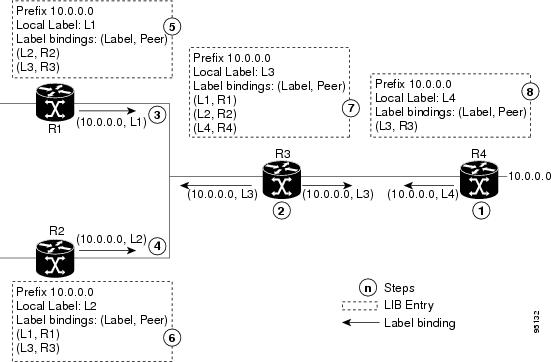
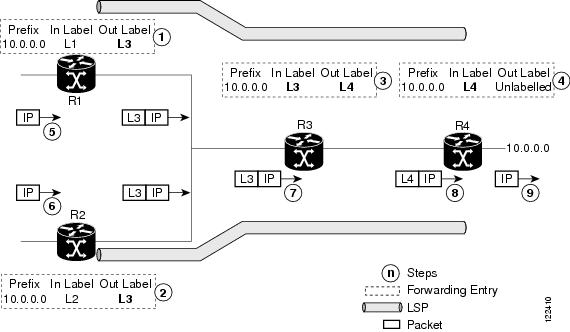

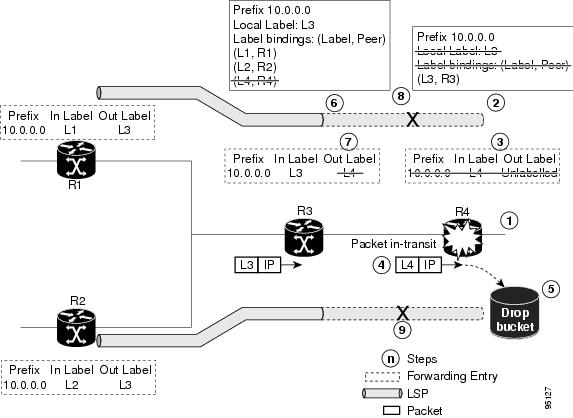
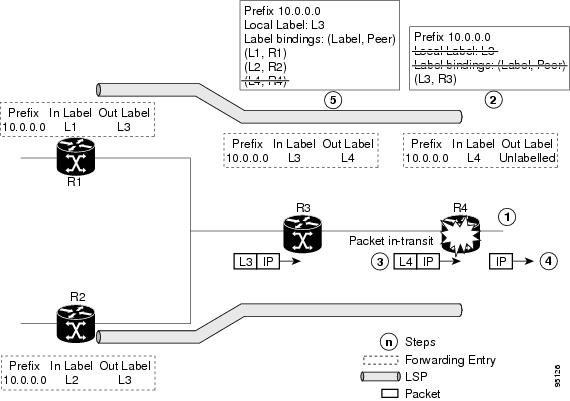

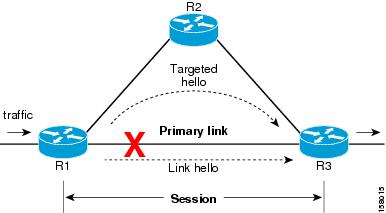
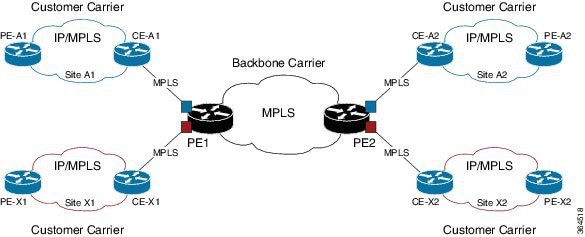
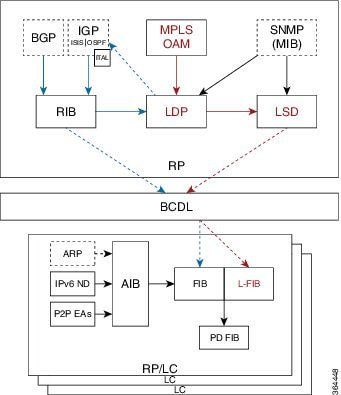
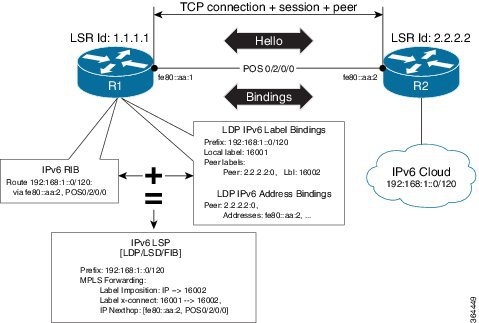
 Feedback
Feedback